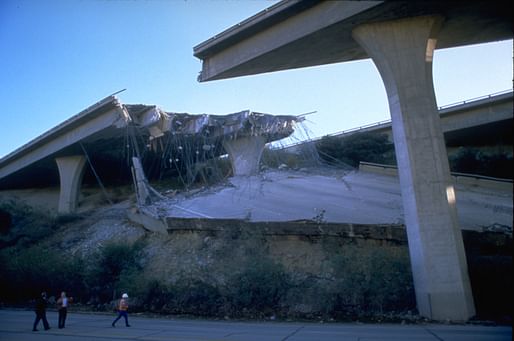

With earthquakes in the news following a pair of recent tremors in California, it’s important to remember that seismic design is an integral and increasingly complex aspect of building design architects work hard to address. An ever-improving standard, seismic codes not only save lives, but also help to shape the built environment, and in places like California, play a large role in terms of building design, overall.
Below is a round-up of some of Archinect's recent earthquake-related coverage.
Changing seismic codes and other earthquake-related issues are currently coming online in many American cities, including in Seattle, where new seismic standards for tall buildings have prompted worries about the safety of certain types of existing buildings.
In San Francisco, seismic concerns run deeper than meets the eye. There, much of the city's downtown is built atop landfill areas prone to liquefaction, with many of the city's tallest buildings designed with obsolete structural designs.
Are San Francisco skyscrapers prepared for the next big earthquake?
Los Angeles, meanwhile, has embarked on a long-term plan to retrofit its massive stock of "soft-story" structures, buildings that are constructed without enough shear wall protection and are therefore likely to collapse whenever the "Big One" strikes.
As part of a ten year plan, the Los Angeles City Council agreed to allow landlords and tenants of the city's 15,000 soft-story apartment complexes to share the costs for upgrading the structures.
In Los Angeles, landlords and tenants will share seismic retrofit costs
Internationally, earthquakes have wrought extensive damage to many regions over the last decade, including in Taiwan, where a 6.4-magnitude earthquake toppled many buildings and killed hundreds of people in 2018.
Five buildings tilt dangerously after magnitude 6.4 Taiwan quake
In Italy, architect Renzo Piano was called upon by the national government to help develop a plan for reconstruction efforts following a disastrous 2016 earthquake.
In Chile, meanwhile, the country’s strict building codes helped reduce earthquake casualties during a sizable 2015 earthquake.
How Chile’s strict building codes help reduce the country's earthquake casualties
A 2017 earthquake that hit Mexico City prompted some soul-searching in California, where thousands of existing concrete frame buildings, like many of those damaged in the Mexico City quake, await retrofitting despite the existence of new, more stringent seismic codes.
This is just a small sample of how the design of seismic codes is being felt around the world's earthquake-prone regions. Not only can adequate seismic design and proper retrofitting be a matter of life and death during a seismic event, its one area of design where architects can have a profound impact on the health and safety of the people who occupy the buildings they design.
Stay tuned for more coverage of the changing nature of seismic codes.
No Comments
Block this user
Are you sure you want to block this user and hide all related comments throughout the site?
Archinect
This is your first comment on Archinect. Your comment will be visible once approved.